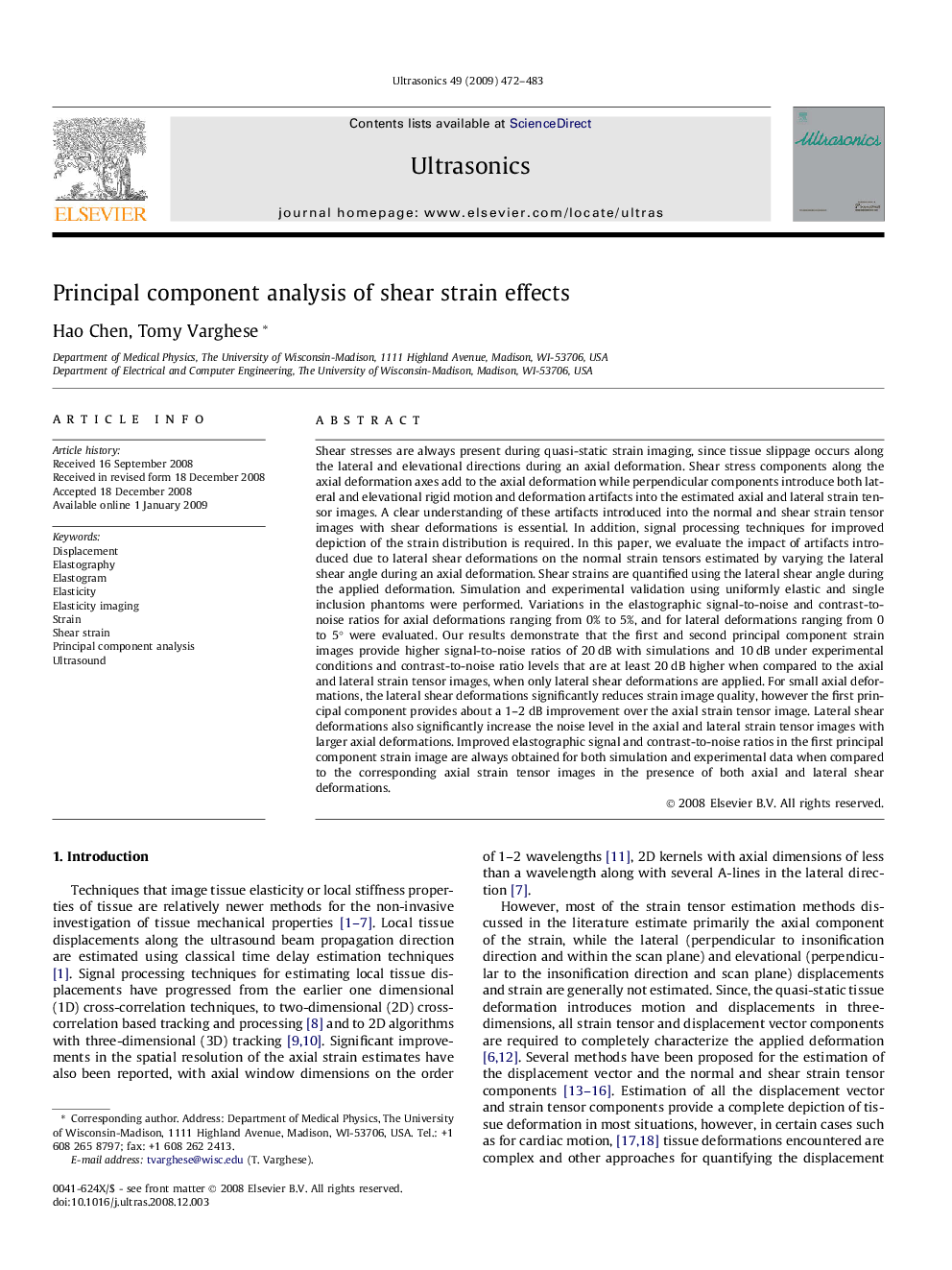| کد مقاله | کد نشریه | سال انتشار | مقاله انگلیسی | نسخه تمام متن |
|---|---|---|---|---|
| 1760013 | 1523218 | 2009 | 12 صفحه PDF | دانلود رایگان |

Shear stresses are always present during quasi-static strain imaging, since tissue slippage occurs along the lateral and elevational directions during an axial deformation. Shear stress components along the axial deformation axes add to the axial deformation while perpendicular components introduce both lateral and elevational rigid motion and deformation artifacts into the estimated axial and lateral strain tensor images. A clear understanding of these artifacts introduced into the normal and shear strain tensor images with shear deformations is essential. In addition, signal processing techniques for improved depiction of the strain distribution is required. In this paper, we evaluate the impact of artifacts introduced due to lateral shear deformations on the normal strain tensors estimated by varying the lateral shear angle during an axial deformation. Shear strains are quantified using the lateral shear angle during the applied deformation. Simulation and experimental validation using uniformly elastic and single inclusion phantoms were performed. Variations in the elastographic signal-to-noise and contrast-to-noise ratios for axial deformations ranging from 0% to 5%, and for lateral deformations ranging from 0 to 5° were evaluated. Our results demonstrate that the first and second principal component strain images provide higher signal-to-noise ratios of 20 dB with simulations and 10 dB under experimental conditions and contrast-to-noise ratio levels that are at least 20 dB higher when compared to the axial and lateral strain tensor images, when only lateral shear deformations are applied. For small axial deformations, the lateral shear deformations significantly reduces strain image quality, however the first principal component provides about a 1–2 dB improvement over the axial strain tensor image. Lateral shear deformations also significantly increase the noise level in the axial and lateral strain tensor images with larger axial deformations. Improved elastographic signal and contrast-to-noise ratios in the first principal component strain image are always obtained for both simulation and experimental data when compared to the corresponding axial strain tensor images in the presence of both axial and lateral shear deformations.
Journal: Ultrasonics - Volume 49, Issues 4–5, May 2009, Pages 472–483